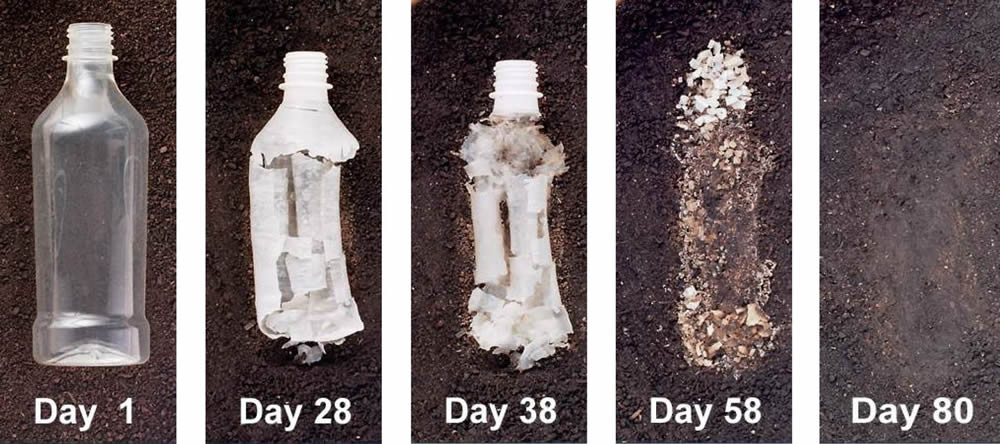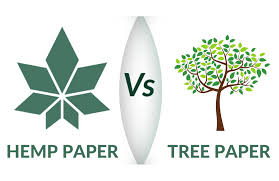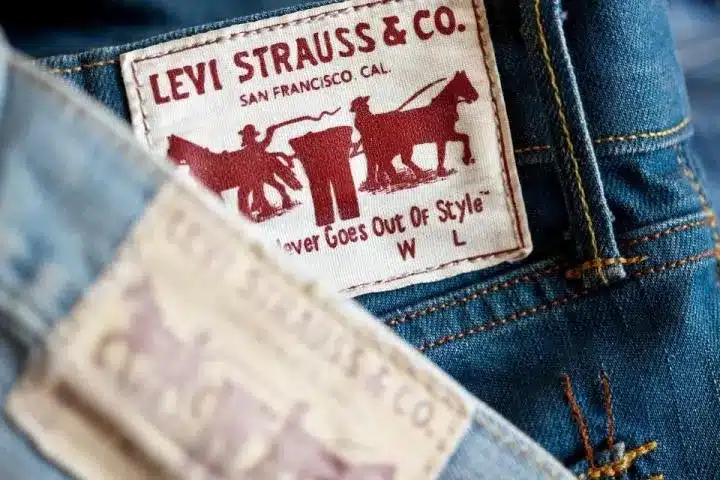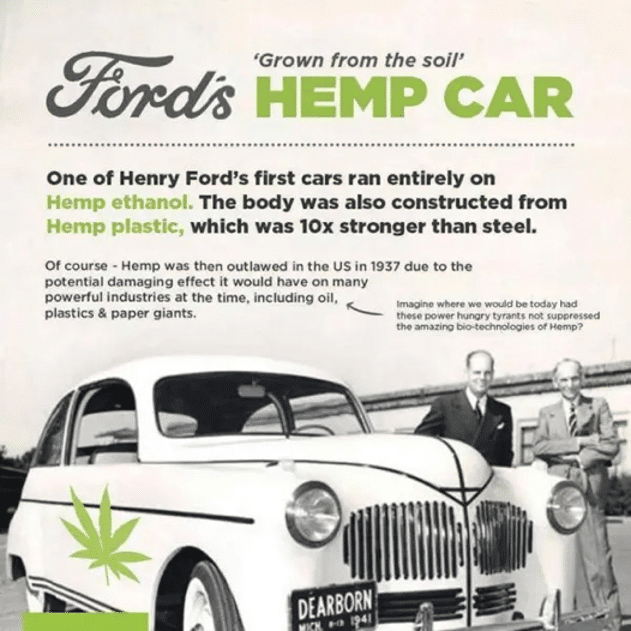a world that runs on hemp
The prohibition of cannabis and industrial hemp has left humanity with an economy based on the petroleum industry with all the adverse consequences that entails. Lifting the ban opens the way to the new greener future based in large part on an economy and world that runs on hemp.
HEMP IS THE IDEAL AGRICULTURAL CROP
Hemp can grow on soils that are too poor, too wet, or too dry for regular food crops. Hemp is therefore not at the expense of agricultural land for food crops. Hemp can be grown without fertilizers and pesticides and is ready for harvest in 90 days so that it can yield several harvests per year in warm climate zones. Farmers can easily make their own seed, so they don’t have to buy it anymore. It is a very flexible crop and can adapt to local conditions in a few generations.
The meter-long roots extract water deep from the ground and remain in the land after harvest, stretching it with biomass built up from CO2, retaining the soil and preventing erosion. Hemp is therefore the ideal agricultural crop for third world countries. Local farmers can grow their own specific varieties and make their own seeds. It can be harvested several times a year, but also completely manually and generate so much work in third world countries. The seeds are extremely nutritious and can be used for humans and animals after pressing for oil. It contains all the essential fatty acids (EFA) that a person needs to stay healthy and that he can otherwise only get by eating meat or fish.
HEMP FOR BIODEGRADABLE PLASTIC
In the Pacific Ocean, 2 huge floating garbage dumps have been discovered, each 10 meters deep and the size of Europe that consist of plastic waste. Since petroleum-derived plastic is not biodegradable, these landfills will continue to exist for hundreds, perhaps thousands of years. At most, the plastic breaks down through sun and seawater into smaller and smaller particles that act as vacuum cleaners and attachment sites for toxins once dumped into the sea by humans.
These plastic particles are gradually absorbed into the food chain by marine animals and the poison eventually ends up on our own plates. Biodegradable plastic can be made from hemp seed oil. Ideal for plastic bags or packaging material. It is better to reserve plastic made from petroleum for high-quality products that must be truly sustainable. It is a waste to use plastic that lasts almost centuries for simple and single use.

HEMP FOR PAPER

Hemp contains about 85% cellulose and is therefore ideal for making paper. For comparison; Wood contains only 20% cellulose. The remaining 80% must be obtained using chemicals that are highly polluting to the environment. Hemp removes 4 times more CO2 from the air per hectare than forestry.
Hemp paper is stronger and it lasts almost forever, which is why money used to ‘endure’ and other important things work on hemp paper, including, for example, the Bibles. America’s declaration of independence dates back to 1776 and is still in perfect condition because it was printed on hemp paper. Worldwide, 42% of all felled trees are used to make paper.
HEMP FOR BUILDING MATERIALS
When seeds and fibers are harvested, woody chips remain, also known as ‘skeweds’. Shives can be mixed with lime and water to form a mush that petrifies into a type of concrete, hempcrete. Hempcrete is 6 times lighter than classic concrete and many times stronger. It is fire resistant for over 4 hours and also acts as insulation. A house of hempcrete is cool in summer and warm in winter. Even when hemp is processed as concrete, it continues to purify CO2 from the air, making the concrete even more petrified and stronger in the long run.
It can serve not only as concrete but also as wood. Chipboard can be made from shives, but everything processed from wood can also be made from hemp. There are already large projects in Belgium where the plant is used to purify soil and air and is then processed as a building material. Insulation is made of it but also built-in prefab modules where the building is straight in a few days, insulation included.
HEMP FOR FIBER
For centuries, the long fibers from the stem of hemp have been used to make rope, sail, canvas and clothing. In Italy, hemp plants used to be grown for the fiber from 5 to 6 meters high. The fiber is many times stronger and more durable than cotton. There are a number of famous works made on hemp canvas such as the ‘Mona Lisa’ and ‘Night Watch’.
Levi Strauss’ original jeans, which were made for American prospectors, were made of hemp fiber and gave the jeans their reputation of being indestructible. Today’s modern cotton jeans naturally wear off.

After tulip bulb cultivation, cotton is the most polluting agricultural crop on earth. More than half of all pesticides used worldwide are accounted for by the cotton industry. The WHO (WORLD HEALTH ORGANISATION) estimates that the cotton industry is directly and indirectly responsible for 20 000 deaths per year due to the pesticides and defoliants used. In addition, cotton is one of the crops that uses the most water per hectare.
So it would be a good thing for several reasons if cotton could be replaced by hemp wherever possible, a crop that offers so many more benefits. Hemp clothing is warm in winter and cool in summer, it absorbs odor and dirt less quickly and therefore needs to be washed less often. It is also several times more wear-resistant than cotton. Fortunately, organic cotton is on the rise but remains a major water consumer. Cotton cultivation covers 2.5% of the world’s agricultural area and consumes 7000 to 9000 litres of water for every kilo of cotton.
Hemp clothing is warm in winter and cool in summer.
HEMP IN THE AUTOMOTIVE INDUSTRY
Rudolph Diesel built its first diesel engine in 1897 that was intended to run on organic oils such as peanut oil, sunflower oil and, of course, the most common oil of the time, hemp seed oil. Diesel engines have a higher combustion temperature and must therefore be stronger and made of high-quality materials.
The petroleum industry was still in its infancy at that time. Oil and gasoline were dirt cheap and are subsidised to this day, so a gasoline engine was cheaper to make. Hence, the polluting gasoline engine was initially preferred by the emerging automotive industry.
Henry Ford made a car entirely from hemp in 1994, but in the meantime, a more modern prototype has been built inspired by his model. With the help of bacteria, you can also make ethanol into alcohol, a relatively clean fuel that can replace diesel and gasoline. With a small modification to the modern diesel engines, they can run on vegetable oil. This Mercedes drove 20,000 km across the US to prove that. The exhaust gases of these biofuels are very clean, especially compared to petroleum products.


Hemp seed oil has the advantage of having a closed CO2 cycle, you do not add more CO2 in the air when burning it than you have extracted during cultivation. The petroleum industry recognizes the finiteness of petroleum and, as an energy supplier, tries to keep a grip on the mobility market with electric driving or driving on hydrogen gas.
Both are generated in polluting power plants, factories that run on fossil fuels or nuclear energy. In addition, rare metals such as Cobalt, Lithium and Nickel are used to make the battery, this is accompanied by all the consequences that entails. Electric driving is, therefore not at all as ‘clean’ or CO2 neutral as it is propose.
Henry Ford hits the boot lid of his plastic hempcar with a sledgehammer to show that he can’t make a dent in it yet.
HEMP HAS A CLOSED CO2 CYCLE
In the petroleum economy, CO2 that has been extracted from the air by plants over hundreds of millions of years and captured in petroleum is blown back into the Earth’s atmosphere in roughly 150 years. This causes an unnatural increase in CO2 content and is also one of the causes of global warming.
Hemp is the largest absorber of CO2 from the air per hectare of all agricultural crops. Not all the CO2 that is removed from the air by the plants later ends up in it again by burning it as fuel. Part of it remains as roots and leaves in the soil in the form of organic matter. Another part, the sheaves and the fiber is processed into plastic, concrete, insulation material and paper. This CO2 is therefore removed from the air for a longer period of time. Driving on hemp fuel therefore reduces the CO2 content in the atmosphere every year.
HEMP CAN SOLVE THE THIRD WORLD COUNTRY PROBLEM
Allowing hemp cultivation in third world countries can end local systemic malnutrition. Malnutrition is a matter of insufficient nutrients in the food. We often see food aid in the form of bags of grain or rice. That is great for the Western farmers who were allowed to sell the product to the aid organizations, but it provides little nutritional value. However, add 5% hemp seed flour, then you get a whole food.
If the seeds are squeezed out for the oil, you can bake super nutritious cookies from the squeezed seeds. Hemp seed oil contains all the essential fatty acids that a person needs to stay healthy and that he can otherwise only get from meat or fish. Hemp seed oil is the only vegetable oil that contains GLA (Gamma Linoleic Acid), an important source of energy for the production of endocannabinoids, which are essential for the proper functioning of the human immune system.
Hemp oil contains Omega 3, Omega 6 and GLA in the right proportions and is one of the healthiest substances on earth. Buddha was said to have fasted for 7 years on white rice and a spoonful of hennnep seed a day. Give schoolchildren in the developing world a hemp seed cookie every day and they will grow up healthy.
Hemp shelves can also be used in third world countries as fuel for cooking and thus help to reduce tree felling. Hemp is also easy to grow on soils that are too poor or too dry for regular food crops. A poor farmer in a third world country who grows without fertilizer on poor soil can provide the same quality of hemp seed oil as fuel for traffic as his colleague in the west who works with fertilizer and expensive equipment.
The third world farmer only produces less oil per hectare but can harvest more often. The by-products such as fibre, wood chips and pressed seed will provide work
The resolution of numerous global challenges hinges upon the repeal of hemp prohibition, as lifting this ban holds the potential to restore a time-honored symbiotic relationship between humanity and hemp, fostering a more sustainable and promising future for both the environment and civilization.


